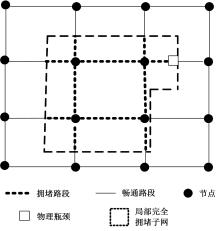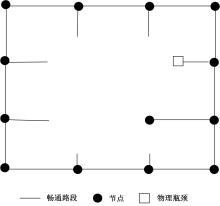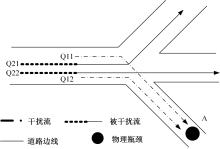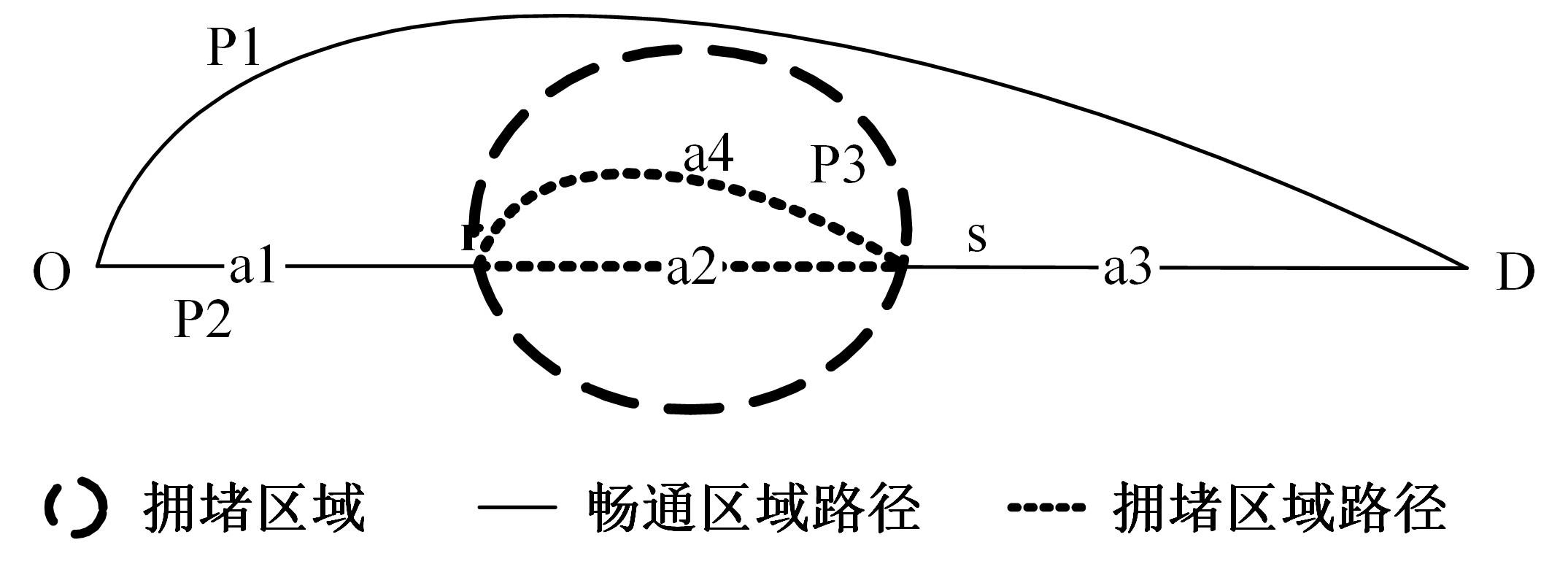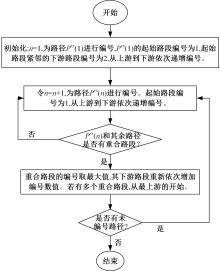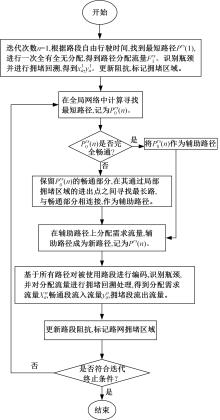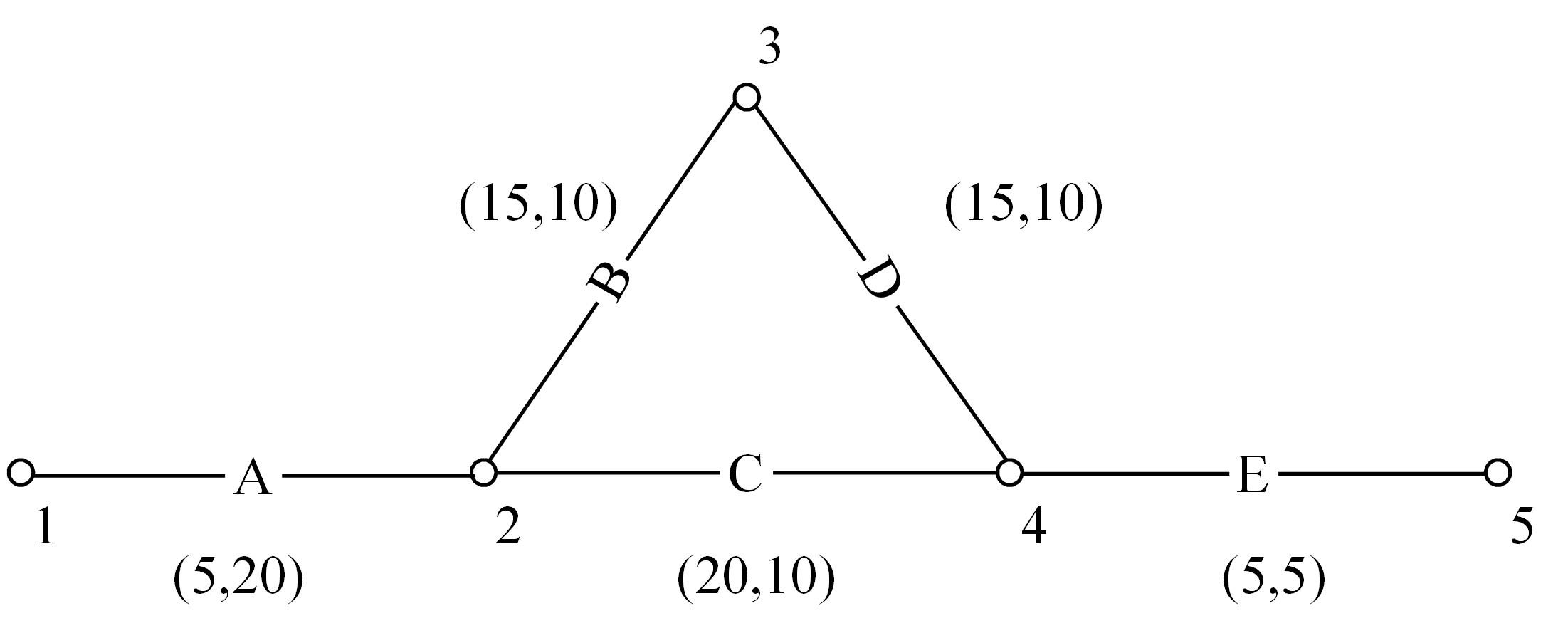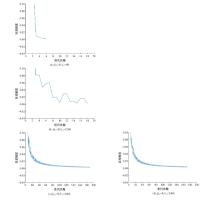Journal of Jilin University(Engineering and Technology Edition) ›› 2024, Vol. 54 ›› Issue (1): 136-145.doi: 10.13229/j.cnki.jdxbgxb.20220214
Iterative weighted algorithms of static congestion traffic assignment considering spatial queuing
Hao YUE1( ),Qi-yue ZHANG1,Zi-yu YANG1,Meng-jie REN1,Xu ZHANG2
),Qi-yue ZHANG1,Zi-yu YANG1,Meng-jie REN1,Xu ZHANG2
- 1.Key Laboratory of Transport Industry of Big Data Application Technologies for Comprehensive Transport,Ministry of Transport,Beijing Jiaotong University,Beijing 100044,China
2.College of Civil Engineering and Architecture,Henan University of Technology,Zhengzhou 450007,China
CLC Number:
- U491
| 1 | Thompson W A, Payne H J. Traffic assignment on a transportation network with capacity constraints and queueing[C]∥The 47th National ORSA/TIMS North American Meeting, Washington DC, USA, 1975:232-239. |
| 2 | Smith M J. Traffic control and traffic assignment in a signal-controlled network with queueing[C]∥International Symposium on the Theory of Traffic Flow and Transportation, Berkeley, USA, 1987: 61-77. |
| 3 | Bliemer M C J, Raadsen M P H, Smits E S, et al. Quasi-dynamic traffic assignment with residual point queues incorporating a first order node mode[J]. Transportation Research Part B: Methodological, 2014, 68: 363-384. |
| 4 | Michiel Bliemer, Luuk Brederodel, Luc Wismans, et al. Quasi-dynamic network loading: adding queuing and spillback to static traffic assignment[J]. ITLS Working Paper, 2012, 2: 1-20. |
| 5 | Smith M J. Traffic assignment and traffic control on a capacity constrained network with queueing[C]∥Annual Meeting of the Italian Operations Research Society, Rome, Italy, 1983. |
| 6 | Smith M J. A link-based elastic demand equilibrium in capacitated network models with queueing delays[J]. Transportation Research Part C, 2013, 29: 131-147. |
| 7 | Yang H, Yager S. Traffic assignment and traffic control in general freeway-arterial corridor systems[J]. Transportation Research Part B, 1994, 28(4): 463-486. |
| 8 | Larsson T, Patriksson M. An augment lagrangean dual algorithm gor link capacity side constrained traffic assignment problems[J]. Transportation Research Part B, 1995, 29(6): 433-455. |
| 9 | Bell M G H. Stochastic user equilibrium in networks with queues[J]. Transportation Research Part B, 1995, 29(2): 125-137. |
| 10 | Nesterow Y, de Palma A. Stationary dynamic solutions in congested transportation networks: summary and perspectives[J]. Networks and Spatial Economics, 2003, 3(3): 371-395. |
| 11 | Smith M, Huang W, Viti F. Equilibrium in capacitated network models with queueing delays, queue-storage, blocking back and control[C]∥20th International Symposium on Transportation and Traffic Theory, Noordwijk, The Netherlands, 2013: 860-879. |
| 12 | Bifulco G, Crisalli U. Stochastic user equilibrium and link capacity constrains: formulation and theoretical evidence[C]∥Proceedings of Seminar Held at Aet European Transport Conference, Loughborough, UK, 1998: 424. |
| 13 | Lam W H K, Zhang Y. Capacity-constrained Traffic assignment in network with residual queues[J]. Journal of Transportation Engineering, 2000, 126(2): 121-128. |
| 14 | Bliemer M C J, Raadsen M P H, Smits E S, et al. Quasi-dynamic traffic assignment with residual point queues incorporating a first order node model[J]. Transportation Research Part B, 2014, 68: 363-384. |
| 15 | Jin Wen-long. The traffic statics problem in a road network[J]. Transportation Research Part B, Methodological, Elsevier, 2012, 46(10): 1360-1373. |
| 16 | 岳昊,刘晓玲,孟晓雨,等. 拥堵道路网的静态交通流非均衡分配方法[J]. 北京交通大学学报,2017,41(03): 1-6. |
| Yue Hao, Liu Xiao-ling, Meng Xiao-yu, et al. A non-equilibrium method to solve static traffic assignment problem at the congested road network[J]. Journal of Beijing Jiaotong University, 2017, 41(3): 1-6. | |
| 17 | 岳昊,张鹏,刘晓玲,等. 拥堵路网交通流均衡分配模型[J]. 哈尔滨工业大学学报, 2019, 51(9): 103-109. |
| Yue Hao, Zhang Peng, Liu Xiao-ling, et al. The equilibrium model for congested traffic assignment in road networks[J]. Journal of Harbin Institute of Technology, 2019, 51(9): 103-109. | |
| 18 | Bliemer M C J, Raadsen M P H. Static traffic assignment with residual queues and spillback[J]. Transportation Research Part B, 2020, 132: 303-319. |
| 19 | 岳昊,任孟杰,杨子玉,等. 考虑拥堵空间排队与溢出的道路网静态交通流分配[J]. 中国公路学报, 2022, 35(7): 241-250. |
| Yue Hao, Ren Meng-jie, Yang Zi-yu, et al. Static traffic assignment on road network with congestion spatial queuing and spillback[J]. China Journal of Highway and Transport, 2022, 35(7): 241-250. |
| [1] | Xiao-jing DU,Rong-han YAO. Evolutionary game mechanism of mandatory lane changing for exiting for intelligent connected bus [J]. Journal of Jilin University(Engineering and Technology Edition), 2024, 54(1): 124-135. |
| [2] | Zhuang-lin MA,Shan-shan CUI,Da-wei HU,Jin WANG. Travel mode choice of traditional car travelers after implementation of driving restriction policy [J]. Journal of Jilin University(Engineering and Technology Edition), 2023, 53(7): 1981-1993. |
| [3] | Ya-li ZHANG,Rui FU,Wei YUAN,Ying-shi GUO. Classification and recognition model of entering and leaving stops' driving style considering energy consumption [J]. Journal of Jilin University(Engineering and Technology Edition), 2023, 53(7): 2029-2042. |
| [4] | Chao-ying YIN,Ying LU,Chun-fu SHAO,Jian-xiao MA,De-jie XU. Impacts of built environment on commuting mode choice considering spatial autocorrelation [J]. Journal of Jilin University(Engineering and Technology Edition), 2023, 53(7): 1994-2000. |
| [5] | Heng-yan PAN,Yong-gang WANG,De-lin LI,Jun-xian CHEN,Jie SONG,Yu-quan YANG. Evaluating and forecasting rear⁃end collision risk of long longitudinal gradient roadway via traffic conflict [J]. Journal of Jilin University(Engineering and Technology Edition), 2023, 53(5): 1355-1363. |
| [6] | Kai LU,Guang-hui XU,Zhi-hong YE,Yong-jie LIN. Algebraic method of bidirectional green wave coordination control for the head of the platoon considering the clearance time [J]. Journal of Jilin University(Engineering and Technology Edition), 2023, 53(2): 421-429. |
| [7] | Qian CAO,Zhi-hui LI,Peng-fei TAO,Yong-jian MA,Chen-xi YANG. Traffic accident risk assessment method for road network considering risk heterogeneity [J]. Journal of Jilin University(Engineering and Technology Edition), 2023, 53(10): 2817-2825. |
| [8] | Xin ZHANG,Wei-hua ZHANG. Safety analysis of main line under different traffic conditions in expressway confluence area [J]. Journal of Jilin University(Engineering and Technology Edition), 2022, 52(6): 1308-1314. |
| [9] | Da-yi QU,Zi-xu ZHAO,Yan-feng JIA,Tao WANG,Qiong-hui LIU. Car⁃following dynamics characteristics and model based on Lennard⁃Jones potential [J]. Journal of Jilin University(Engineering and Technology Edition), 2022, 52(11): 2549-2557. |
| [10] | Chun-jiao DONG,Dai-yue DONG,Cheng-xiang ZHU-GE,Li ZHEN. Trip characteristics and decision⁃making behaviors modeling of electric bicycles riding [J]. Journal of Jilin University(Engineering and Technology Edition), 2022, 52(11): 2618-2625. |
| [11] | Da-yi QU,Kai-xian HEI,Hai-bing GUO,Yan-feng JIA,Tao WANG. Game behavior and model of lane-changing on the internet of vehicles environment [J]. Journal of Jilin University(Engineering and Technology Edition), 2022, 52(1): 101-109. |
| [12] | Wen-hui ZHANG,Jing YI,Wei LIU,Qiu-ying YU,Lian-zhen WANG. Injury mechanism of occupants in bus during rear-end crash based on MADYMO [J]. Journal of Jilin University(Engineering and Technology Edition), 2022, 52(1): 118-126. |
| [13] | Zhi-wei LIU,Jian-rong LIU,Wei DENG. Travelers′ choice behavior of autonomous vehicles based on latent class [J]. Journal of Jilin University(Engineering and Technology Edition), 2021, 51(4): 1261-1268. |
| [14] | Jin XU,Cun-shu PAN,Jing-hou FU,Jun LIU,Dan-qi WANG. Speed behavior characteristic on typical driving scenarios and along switched scenarios [J]. Journal of Jilin University(Engineering and Technology Edition), 2021, 51(4): 1331-1341. |
| [15] | Wei-xiong ZHA,Qi-yan CAI,Jian LI,Li-xin YAN. Optimization of offset of urban arterial signal coordination under condition of vehicle entry and exit on side road [J]. Journal of Jilin University(Engineering and Technology Edition), 2021, 51(2): 565-574. |
|
||
